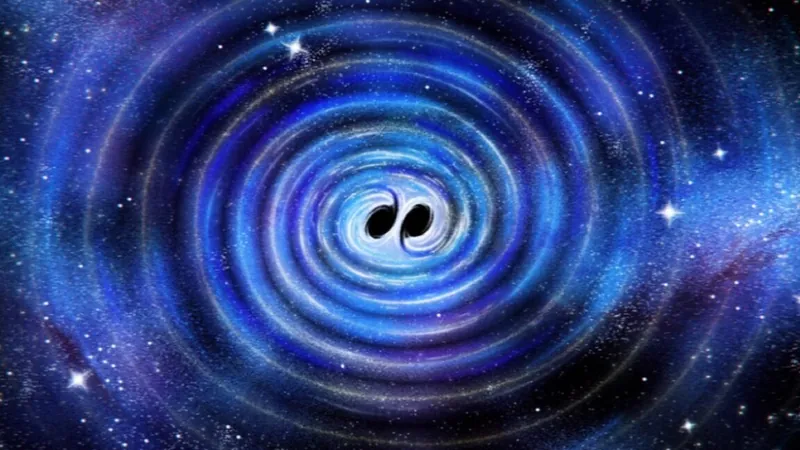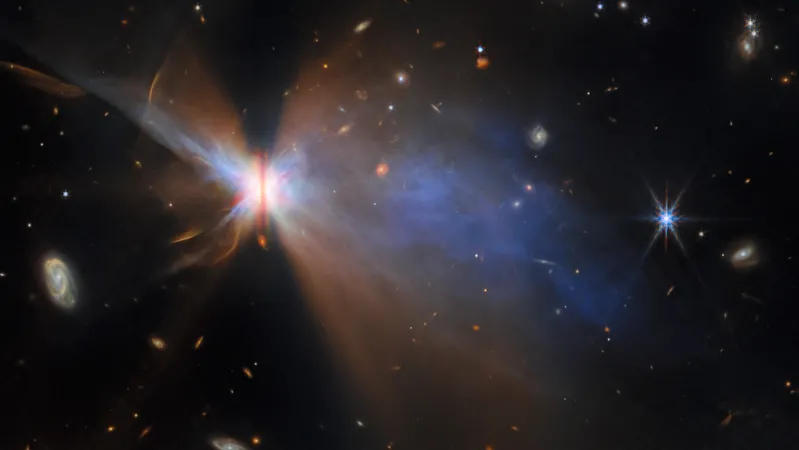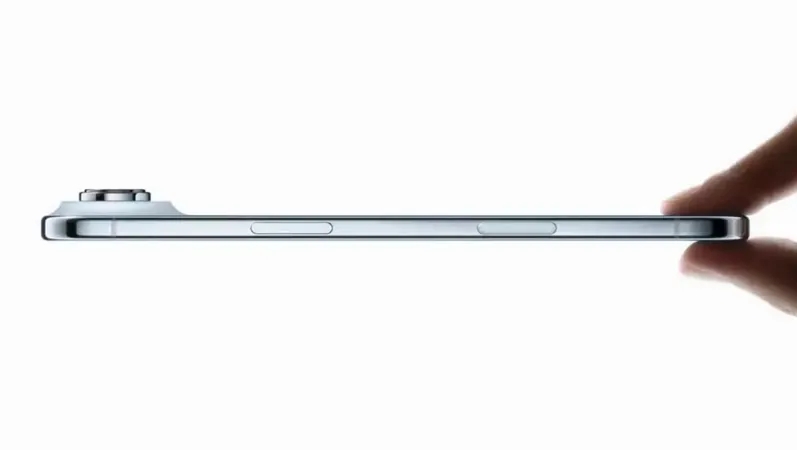
Game-Changer: New Black Hole Merger Supports Hawking's Area Theorem!
2025-09-11
Author: Benjamin
A Cosmic Prediction Turned Reality
In 1971, renowned physicist Stephen Hawking made a bold claim: the surface area of a black hole can never diminish, only grow or stay the same. This groundbreaking idea, known as Hawking's area theorem, has just received solid backing from recent discoveries in gravitational waves—the echoes of merging black holes.
A Decade of Discoveries
This revelation coincides spectacularly with the 10th anniversary of LIGO's first historic detection of a black hole merger, which paved the way for further exploration of these enigmatic cosmic entities. A fresh study published in *Physical Review Letters* details the most compelling evidence yet supporting Hawking’s theorem.
Meet the LIGO/Virgo/KAGRA Collaboration
The LIGO/Virgo/KAGRA (LVK) consortium is on a mission to uncover cosmic secrets, searching for gravitational waves generated by black hole and neutron star mergers. Using advanced laser interferometry techniques, LIGO's facilities in Washington and Louisiana, along with the Virgo detector in Italy and KAGRA in Japan, have pushed the boundaries of physics. Construction of LIGO-India is also underway, expected to become operational after 2025.
The Sound of Collisions
On September 14, 2015, LIGO made its mark by capturing the world’s first direct evidence of gravitational waves. This initial detection, signaling the merger of two black holes, earned them a Nobel Prize in Physics in 2017. Since then, LIGO/Virgo/KAGRA has identified a variety of mergers, including mixed ones involving both black holes and neutron stars, thus launching a new era of multi-messenger astronomy.
The Most Massive Collision Yet?
This summer, the collaboration detected an astounding signal, dubbed GW231123, revealing the largest merger of two black holes ever recorded—a colossal new black hole now boasts a mass 225 times that of our Sun. But the latest sensation, a signal known as GW250114, has scientists buzzing.
Tuning Into Gravitational Overtones
Thanks to LIGO's growing sensitivity, the team has captured unprecedented gravitational wave signals. GW250114, similar in nature to the 2015 event, provided strikingly clear data for researchers to analyze. The ringing of this merger enabled them to accurately calculate the properties of the newly formed black hole and confirm theoretical predictions, including essential aspects of the no-hair theorem.
Empirical Evidence for Theoretical Theorems
The findings not only endorsed previous results but also provided an enlightening view of the black hole's signal pre- and post-merger. Co-author Maximiliano Isi described the clarity achieved as a huge step forward for cosmological research. The combined surface areas of the merging black holes expanded from approximately 240,000 square kilometers to about 400,000 square kilometers after the merger—equal to the sizes of the UK and Sweden, respectively.
Hawking’s Legacy Lives On
Hawking's insights, particularly the correlation between a black hole's surface area and entropy, continue to fuel ongoing research into a quantum theory of gravity. Kip Thorne, a close acquaintance of Hawking, reflects on how the physicist would have delighted in these findings, congratulating LIGO on their success. With each discovery, we move closer to unraveling the true nature of space and time, proving yet again that Hawking’s theories are not just elegant thoughts but keys to understanding the universe.









 Brasil (PT)
Brasil (PT)
 Canada (EN)
Canada (EN)
 Chile (ES)
Chile (ES)
 Česko (CS)
Česko (CS)
 대한민국 (KO)
대한민국 (KO)
 España (ES)
España (ES)
 France (FR)
France (FR)
 Hong Kong (EN)
Hong Kong (EN)
 Italia (IT)
Italia (IT)
 日本 (JA)
日本 (JA)
 Magyarország (HU)
Magyarország (HU)
 Norge (NO)
Norge (NO)
 Polska (PL)
Polska (PL)
 Schweiz (DE)
Schweiz (DE)
 Singapore (EN)
Singapore (EN)
 Sverige (SV)
Sverige (SV)
 Suomi (FI)
Suomi (FI)
 Türkiye (TR)
Türkiye (TR)
 الإمارات العربية المتحدة (AR)
الإمارات العربية المتحدة (AR)